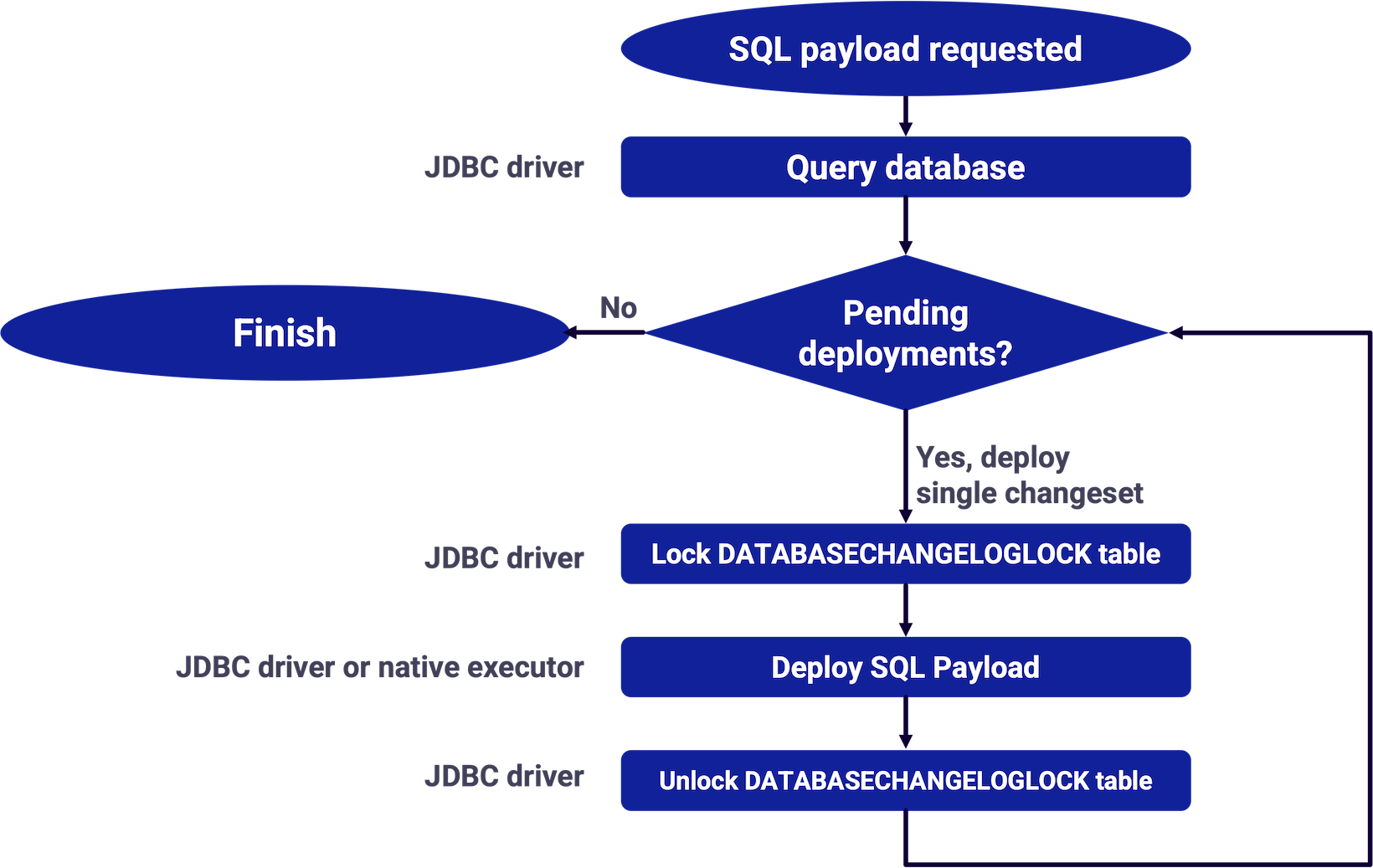What are native executors?
Last updated: July 14, 2025
A native executor is designed to run scripts in a way that directly matches your target software environment.
Liquibase primarily uses JDBC drivers to connect and deploy changesets to a database. However, there are instances when the JDBC driver is insufficient to process highly specialized SQL. Instead, you may need to deploy this complex SQL over a native executor, which is a platform-specific command-line tool.
Using native executors with Liquibase Pro can provide distinct advantages, such as the ability to process database client-specific settings and environment variables within the SQL script.
During execution time, Liquibase invokes a native executor for changesets that request it to deploy a payload to a target database.

Compatible Native Executors
The following executors can be used with Liquibase Pro:
Oracle: use the
sqlplusnative executor.Microsoft SQL Server: use the
sqlcmdnative executor.PostgreSQL: use the
psqlnative executor.MongoDB Pro: use the
mongoshnative executor.DB2 z/oS: use the
jcl native executer.
Database native executors are not shipped with Liquibase. Users need to install the compatible native executor specific to their database type.